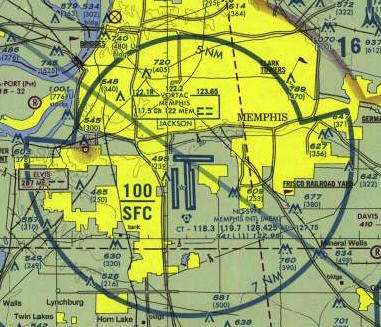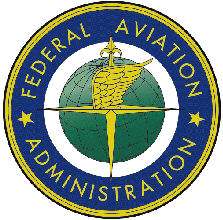Memo Says MEM Not Complying With Separation Regs
It started with an internal FAA memo, that was
published on a blog run by a past president of NATCA, according to
The (Memphis) Daily News last week.

The April 2 memo originated from an internal investigation by
the FAA's Air Traffic Safety Oversight Services. Director Anthony
S. Ferrante issued the memo to Air Traffic Operation Terminal
Services' Bruce Johnson. It was reprinted on "The Main Bang," a
blog run by former NATCA president John Carr.
The issue at Memphis is how air traffic is controlled on three
of the airport's four runways that are near each other. Runways 18L
and 18C are parallel and run north-south, while Runway 27 runs
east-west and is perpendicular to 18L and 18C.
According to the memo: "An Air Traffic Oversight Service
investigation has determined that the Air Traffic Organization
(ATO) is not in compliance with FAA Order 7110.65, Paragraph
3-10-4, at Memphis Air Traffic Control Tower (MEM). MEM was also
unable to provide required documentation to demonstrate that the
current practice of conducting simultaneous independent approaches
to runways 18L, 18C and 27 was properly authorized."
When aircraft land on runway 18L or 18C from the north, they
pass over Runway 27; if an airplane is on 27 or its taxiways, it
creates a potential safety hazard.
Pete Sufka, an air traffic controller for the Memphis tower and
president of the local NATCA chapter, is worried about controllers
authorizing such an operation, especially when it appears to be in
violation of FAA orders.
"The procedure, in itself, is safe, but we question the legality
of it," he said. "I think the Oversight Service is also questioning
the legality of it. I don't want the controllers set up in a
position where they're doing something illegal, or if something
goes wrong they're going to be disciplined. And I also don't want
the pilots and passengers be put in a dangerous situation that
doesn't have to be there."
Sufka added, "When they (aircraft) start this climb-up and gain
speed, they're climbing up right into the aircraft that are landing
on 18L or 18C. We've had this happen a number of times over the
years, in the range of 'really, really ugly' to 'not too bad.' Two
planes haven't come together because of this yet, but we're pushing
our luck the more we use it."
 Safety also comes into
question during a go-around, when the plane quickly gains speed and
altitude before making a circuitous pattern back into landing
position.
Safety also comes into
question during a go-around, when the plane quickly gains speed and
altitude before making a circuitous pattern back into landing
position.
A go-round could be tragedy waiting to happen for planes
approaching Runway 27 when simultaneous approaches are underway on
the perpendicular runways.
Air Traffic Operation Terminal Services' Bruce Johnson was
unavailable for comment, while Memphis-Shelby County Airport
Authority president Larry Cox declined comment, deferring to the
FAA. Memphis air traffic facility manager Bill Wurtz, who directed
inquiries to the FAA's southern regional office in Atlanta.
Regional Public Affairs Manager Kathleen Bergen said the FAA
acknowledges someone has raised concerns about the flyover
procedure and the agency is investigating.
Bergen said the procedure of having airplanes land on the two
runways occurs only in good weather, when wind conditions are
favorable and only with smaller aircraft landing on Runway 27, such
as "single engine, twin engine, small business jets, small regional
jets," she said.
"That procedure has been in place for decades - I'm told back to
the 1970s," Bergen said. "It's something that's been looked at and
was revalidated as recently as 1999. Apparently, someone at the
tower raised an issue with that procedure and elevated that
concern, which generated a review by the FAA safety office in
Washington."
Bergen said the procedure is safe and will continue whenever
weather allows.
"At the same time, the FAA is going to take a closer look at the
procedure," she said. "We're going to revalidate the procedure. We
want to ensure we maintain the highest level of safety at Memphis
while minimizing the impact to the users - the air carriers that
come in as well as the private planes."
The revalidation process, she said, could take up to 60
days.
 ANN's Daily Aero-Linx (05.06.25)
ANN's Daily Aero-Linx (05.06.25) ANN's Daily Aero-Term (05.06.25): Ultrahigh Frequency (UHF)
ANN's Daily Aero-Term (05.06.25): Ultrahigh Frequency (UHF) ANN FAQ: Q&A 101
ANN FAQ: Q&A 101 Classic Aero-TV: Virtual Reality Painting--PPG Leverages Technology for Training
Classic Aero-TV: Virtual Reality Painting--PPG Leverages Technology for Training Airborne 05.02.25: Joby Crewed Milestone, Diamond Club, Canadian Pilot Insurance
Airborne 05.02.25: Joby Crewed Milestone, Diamond Club, Canadian Pilot Insurance




